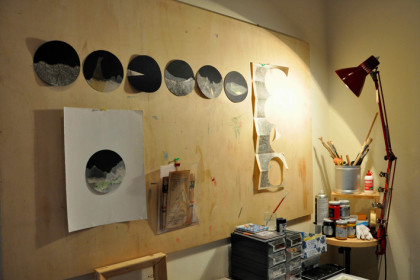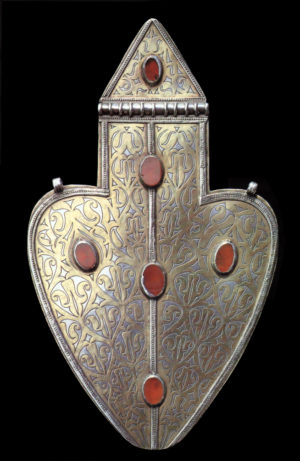
Erion Nazeraj defines himself as a sculptor, but what he shows me first of all are drawings. Dozens and dozens of images on different media, recovered pieces of paper that in the artistic operation lose their original functionality, sometimes the graphic sign intersects with collages, sometimes paper layering prevails and there is a strange tangency between drawing and sculpture, between assembly and mind. The back of the boxes of medications makes sense because sketching images becomes a way to preserve scars, to overcome pain and discomfort without forgetting or removing it.
The exhibition Inside/Rinascite was dismantled a few weeks ago, but the artist started from that experience to tell me about his work, which always claims to be autobiographical, expressing a history of migration and displacement, the search for a place to call “home”, liberation from academicism and finally a rebirth that passes from lead sculpture Utero Natura, through vital organs – heart above all, and the brain – until you get to Hive, a geometric construction of hexagons, potentially repeatable endlessly as the tessellations of Escher, and in every form contains an infant, a child who emerges from a vital and milky fluid.
But the journey to get to the result of a complete exposure was long, complex and rich in meaning. Like all trips it started from maps, representations that allow those who work to overview the land crossed, to orient yourself in a new world. Erjon draws on, cuts, stitches and makes out tracks on them by taking possess of them at the same time through his involvement. And then the suitcase and the shoes, the first as a memory container painted on a paper bag, also container, the second essential tools to move from one place to another, while boats, still in paper, sublimate reality, sometimes tragic, of wicked boats carrying migrants.
The sculptures revolve around the same issues, they are placed in the environment and in some cases change their own relationship with space: one of the first, the Orso in travertine created shortly after graduating from the Academy in Bologna, was designed standing, but now Nazeraj overthrew it and placed it on the chest that contains it: a distortion of perspective that is characteristic of contemporary art and that leads to reflection, in this case about nature, tortured and “overturned” by man.
Hearts, feet, brain matter reappear: they are covered in spines, they turn into vegetables, they walk on new paths, this time smoother, as the boards of a parquet.
 English
English  Italiano
Italiano 



